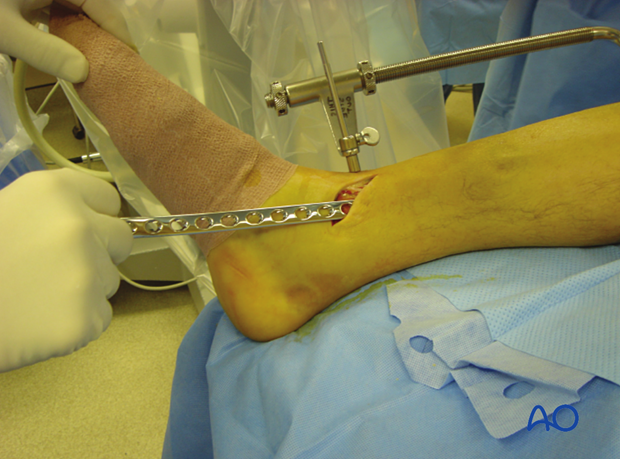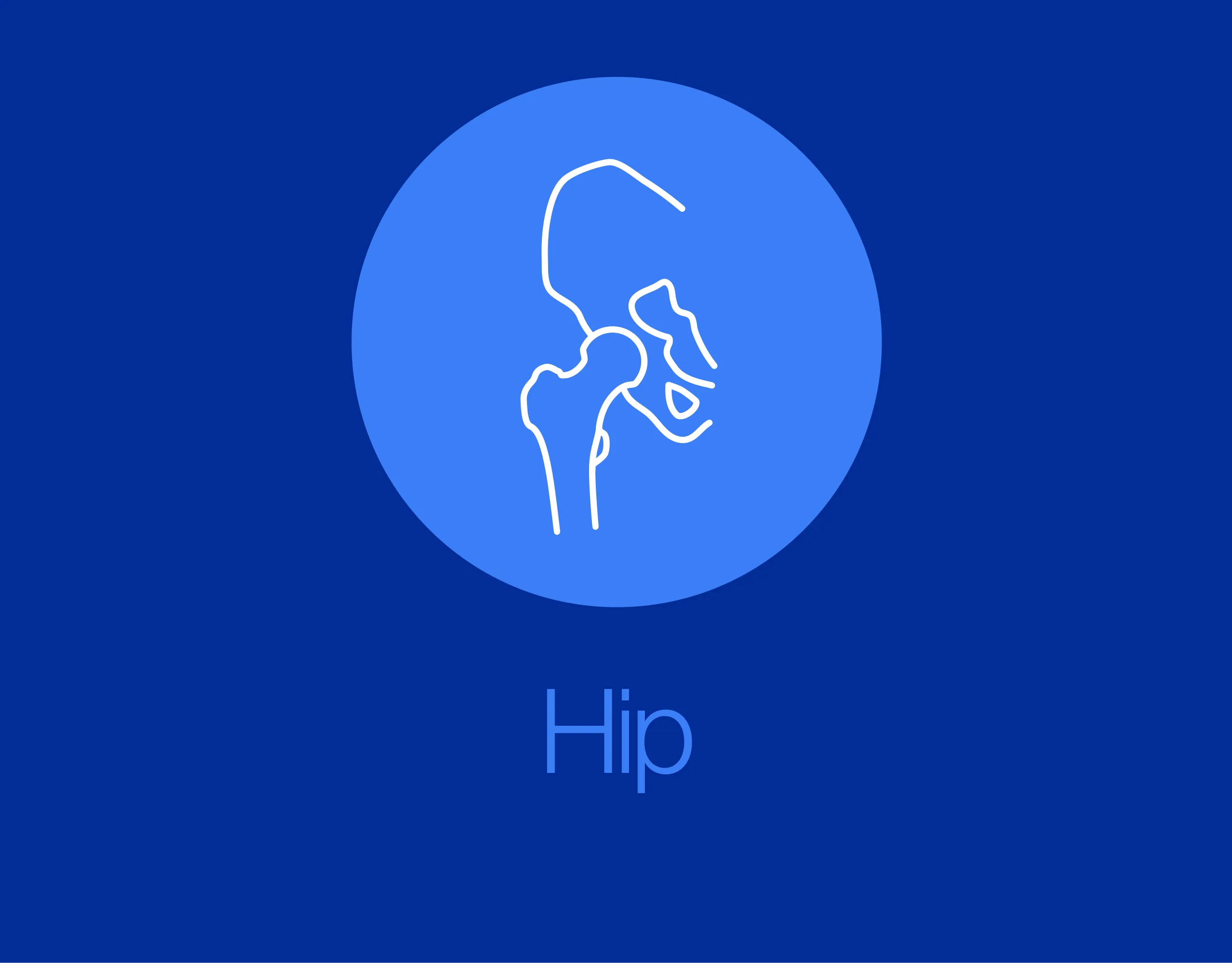Minimally invasive medial approach to the tibial shaft
1. Indications
Minimally invasive fixation of tibial fractures is preferably done through the medial approach, especially for distal fractures.
However, if the skin is injured, this may not be safe. A satisfactorily contoured plate can be passed subcutaneously to fit the medial tibial surface relatively easily.
This approach does not affect the tibial blood supply or the surrounding musculature.
This subcutaneous approach leaves the periosteum intact.
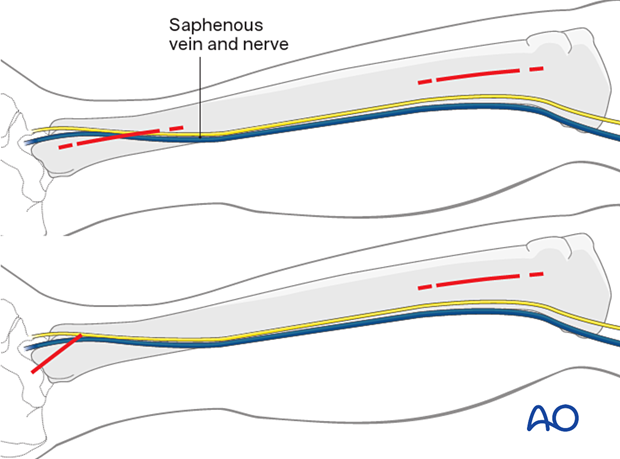
2. Anatomy
The lateral and posterior surfaces of the tibia are covered by muscle. The anteromedial surface has only a thin layer of subcutaneous tissue and skin. This surface provides less blood supply to the underlying bone.
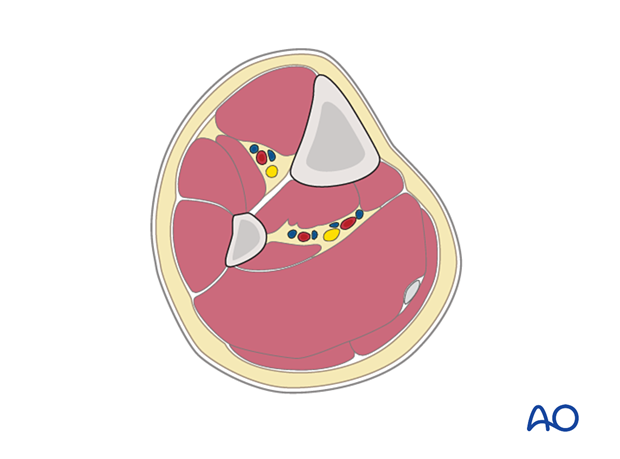
The lower leg has four compartments:
- Anterior
- Lateral
- Deep posterior
- Superficial posterior
The anterior compartment has three muscles, one main artery, and one nerve: the tibialis anterior, extensor hallucis longus, extensor digitorum longus, the anterior tibial artery, and the deep peroneal nerve.
The lateral compartment has two muscles and one nerve: the peroneus longus and brevis, and the superficial peroneal nerve.
The deep posterior compartment has three muscles, two arteries, and one nerve: the tibialis posterior, flexor hallucis longus and flexor digitorum longus, and the peroneal and posterior tibial arteries, as well as the tibial nerve.
The superficial posterior compartment has two muscles and one nerve: the gastrocnemius, the soleus, and the sural nerve.
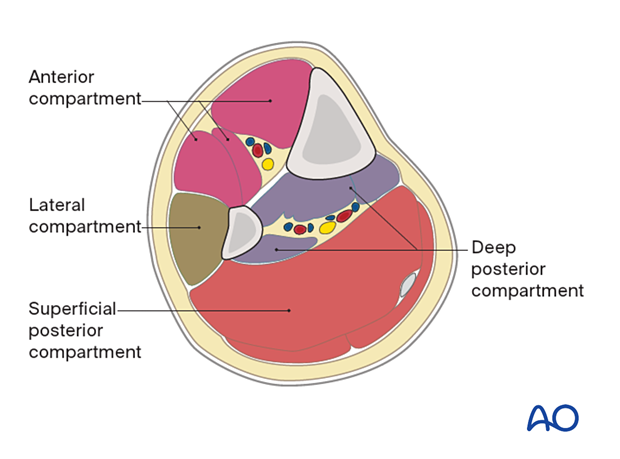
3. Skin incisions
Make separate proximal and distal skin incisions, approximately 5 cm long, on the medial surface of the tibia.
The incisions span a length equal to that of the planned plate.
Distally, the following options are possible:
- A straight incision
- A slightly oblique incision
An oblique distal incision may increase the risk of injury to the saphenous vein and nerve, which should be identified and protected.

The straight incision is more direct, but it leaves an incision over the plate.
The oblique distal incision does not lie directly over the plate, but allows its insertion. This may reduce the risk of wound-healing complications.
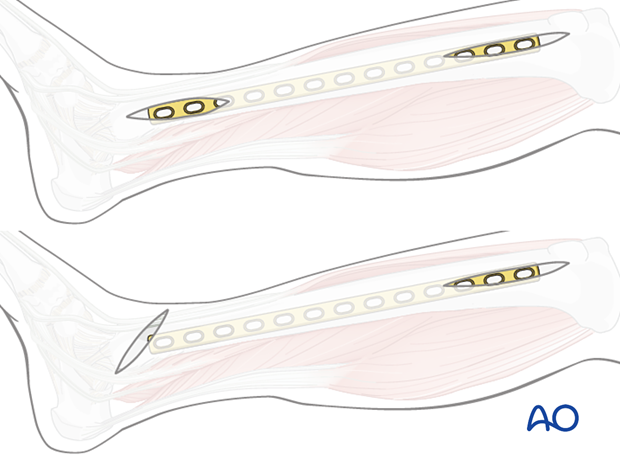
4. Deep dissection
Deepen the dissection to the periosteum, which is left intact.
Remember to identify and protect the saphenous vein and nerve in the distal incision.
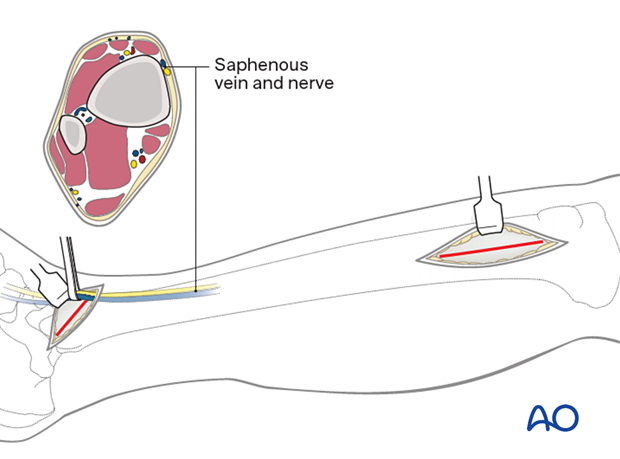
A large distractor helps to reduce and stabilize the fracture. Use a soft-tissue elevator, or an appropriate plate, to prepare a tunnel under the subcutaneous tissues and over the periosteum.
